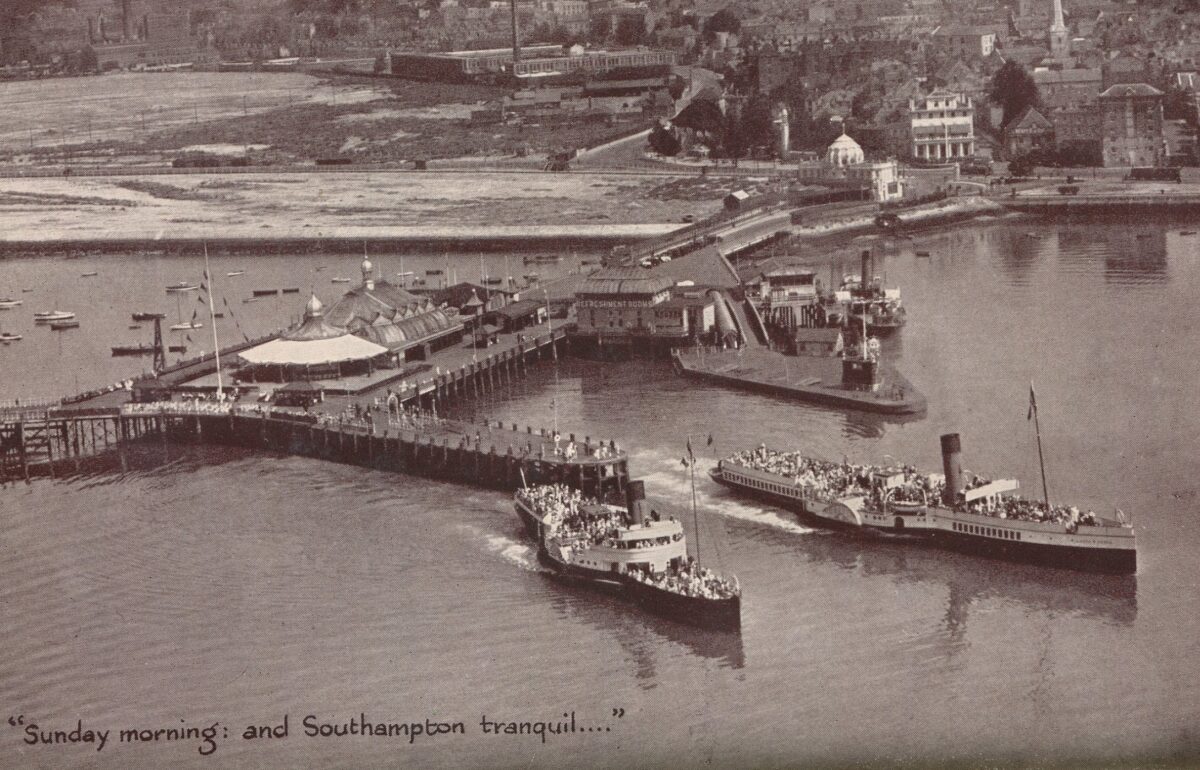
On Thursday 26th July 1934 Lorna Doone was scheduled to run a day trip from Southampton at 9am around the Isle of Wight.
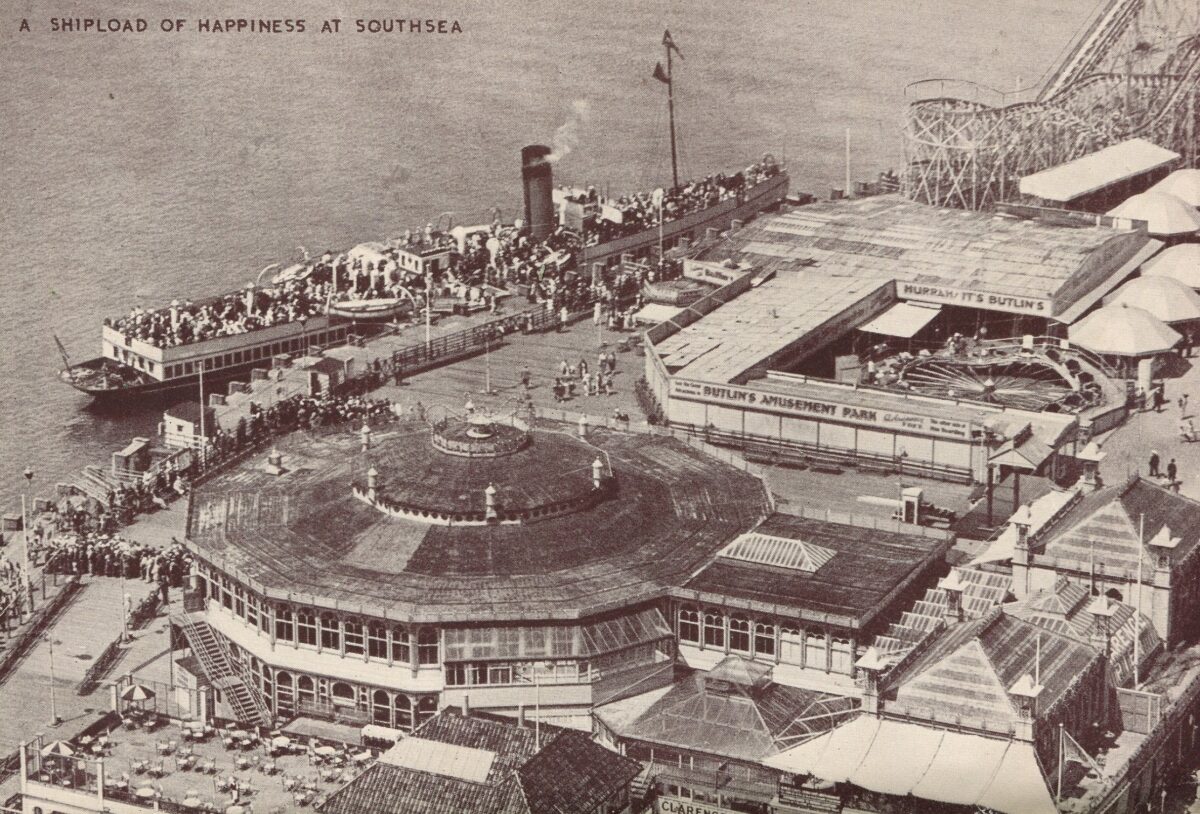
She then called at Ryde (10.15am) before crossing to pick up more passengers at Southsea.
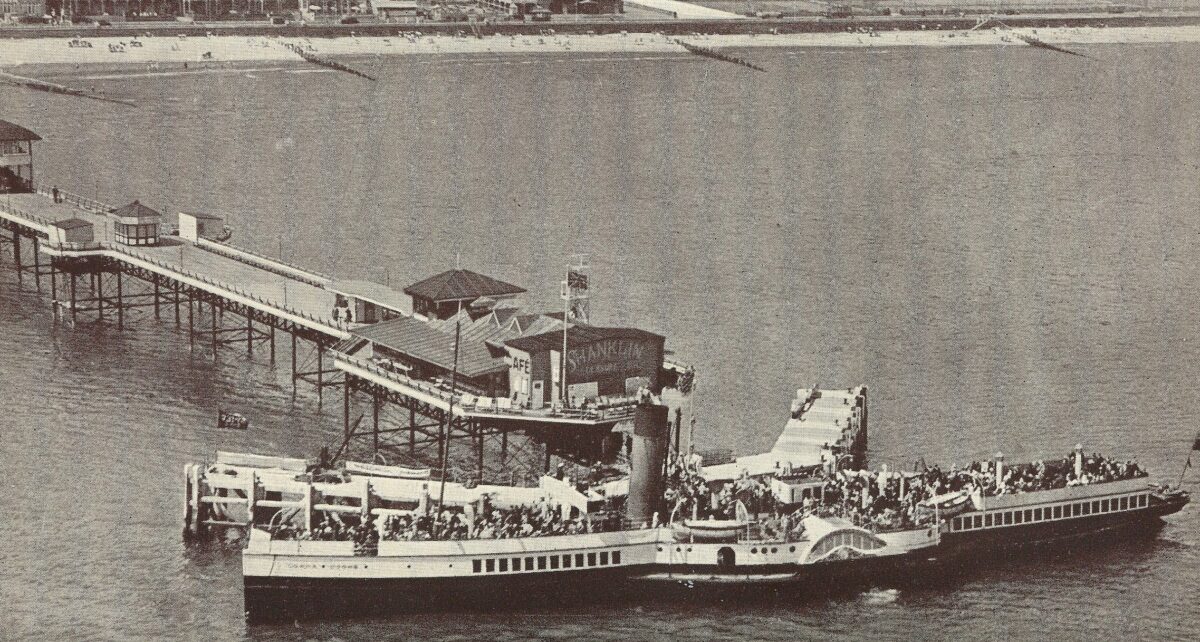
Then it was off southwards along the Island’s east coast to collect more passengers at Sandown (11.45), Shanklin (12 noon) and Ventnor (12.20pm).
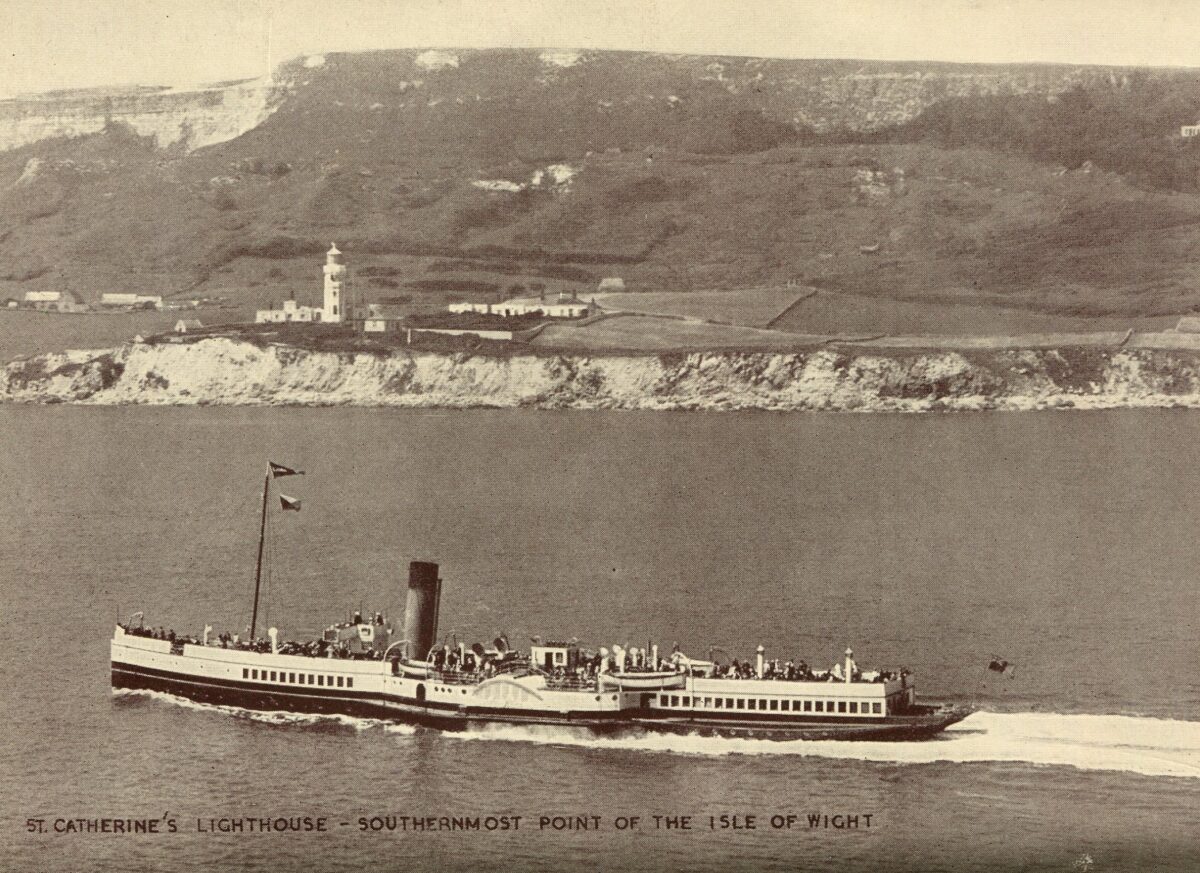
Then on a heading of 255 degrees she cruised the 4 nautical miles close in to the coast to round the Island’s southerly tip at St Catherine’s Point shortly before 1pm.
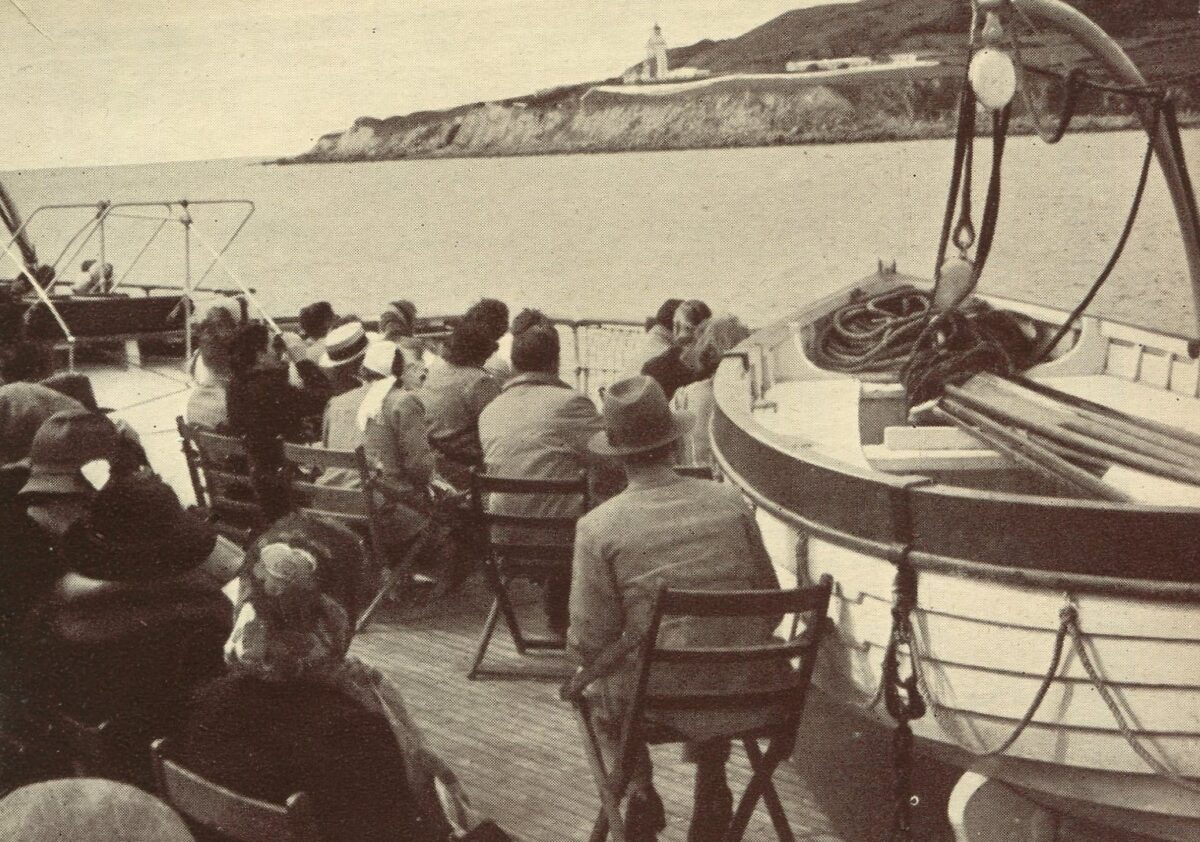
After rounding St Catherine’s Point then it was onto a heading of 300 degrees for the 13 nautical mile run up to the Needles which would have taken a little under an hour depending on the tide. This was the least attractive part of the cruise for the passengers with the coastline a good two miles distant.
This heading would also have put her almost broadside on to any swell from the prevailing SW wind which would have led to some rocking and rolling in anything other than light winds. And with fresher breezes there would have been work for the deck boys with their buckets and mops on “seasick patrol”.
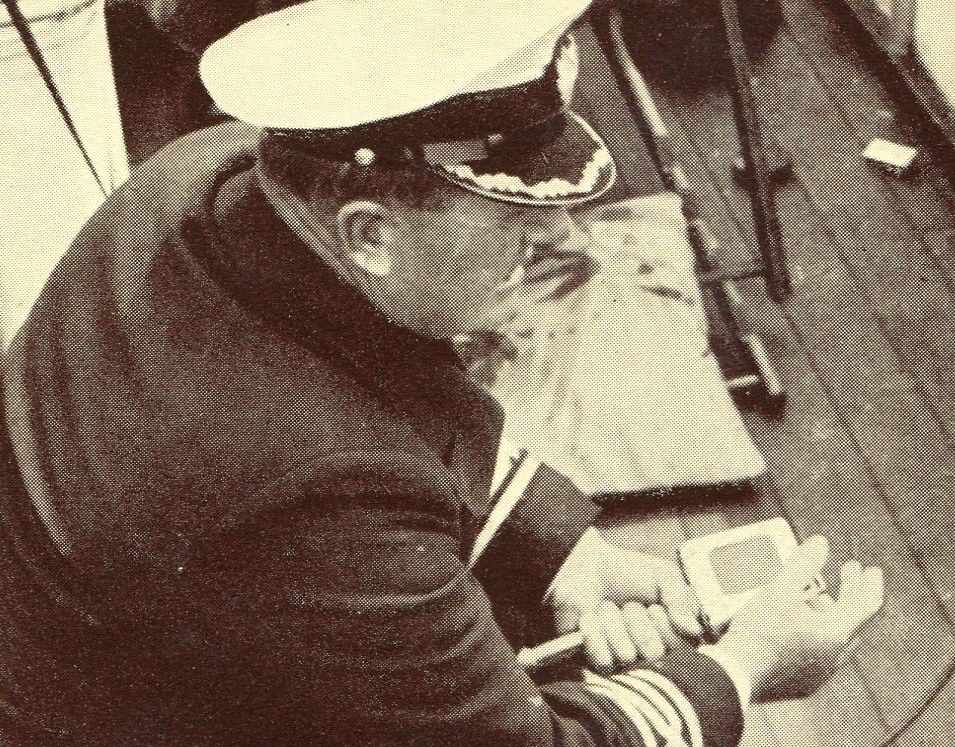
On Cosens and Red Funnel the commentary was always given by the captain or the mate. The Dorset County Archive contains the manuscript of his script for trips round the Isle of Wight written by Cosens’s long-standing paddle steamer master Captain Rawle. In that he recommends pausing the commentary during this less interesting part of the cruise “where passengers often like to take a snooze in their deckchairs.”

The Needles would have been rounded about 2pm before altering course up the Needles Channel past Alum Bay, Totland Bay and Colwell Bay on the starboard hand and the notoriously treacherous Shingles Bank to port.

Lorna Doone would have entered the Solent passing Hurst Castle about 2.30pm depending on the tide.
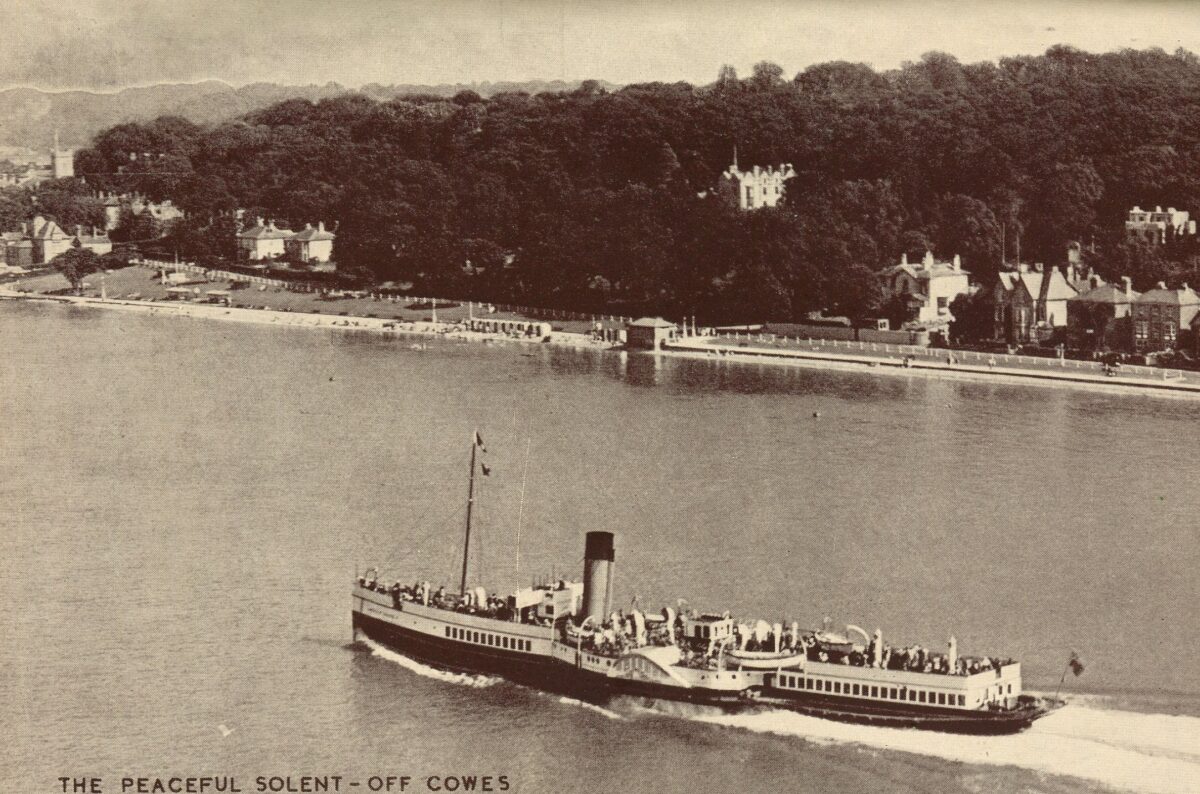
Then it was on up the Solent passing Yarmouth, Newton Creek, Gurnard Point and Egypt Point off Cowes around 3.15pm.

Then on to Ryde for 3.45pm to unload passengers who had boarded there in the morning as well as those for Southsea for which there was a connection on another Red Funnel paddler. This meant that those who had boarded at Ryde and Southsea didn’t have to stay aboard and have their day trip unnecessarily extended by having to go back down the eastern coast of the Island for a second time before they could get off.
Then it was back down to Sandown (4.45pm) Shanklin (5.10pm) and Ventnor (5.30pm) before heading back to Southsea and Southampton (8.30pm) direct
Built for service on the Bristol Channel 1891, what became Red Funnel bought Lorna Doone seven years later to help counter the threat posed by the arrival on the Southampton scene of P & A Campbell’s large, fast and modern paddle steamer Cambria.
As built Lorna had a low and open foredeck but this was plated up to extend the promenade deck right to the bow after a particularly rough trip in 1906 when green seas smashed their way into the main body of the ship causing some damage and concern. After that the management considered that they would have to do something to prevent further such incidents and so plated up the bow.
Lorna Doone was smaller and more economical to run than Balmoral and so generally operated a longer season than her larger cousin. She was generally based at Southampton and usually rostered as the second longer distance excursion steamer from there taking the sailings to Ryde, Southsea and the Isle of Wight’s East Coast resorts with extensions sometimes retracing her route back up to Southsea and Ryde, sometimes continuing on around the Island, as we have seen here, and sometimes continuing on to give time ashore at Bournemouth.
Lorna Doone was returned after war service in 1947 in too poor condition to merit a rebuild so was scrapped the following year at Southampton.
Acknowledgement: Pictures are from “Red Funnel Stuff” by E P Leigh-Bennet and Helen McKie published in 1939.
Kingswear Castle returned to service in 2023 after the first part of a major rebuild which is designed to set her up for the next 25 years running on the River Dart. The Paddle Steamer Kingswear Castle Trust is now fund raising for the second phase of the rebuild. You can read more about the rebuilds and how you can help if you can here.
John Megoran
This article was first published on 26th July 2021.

